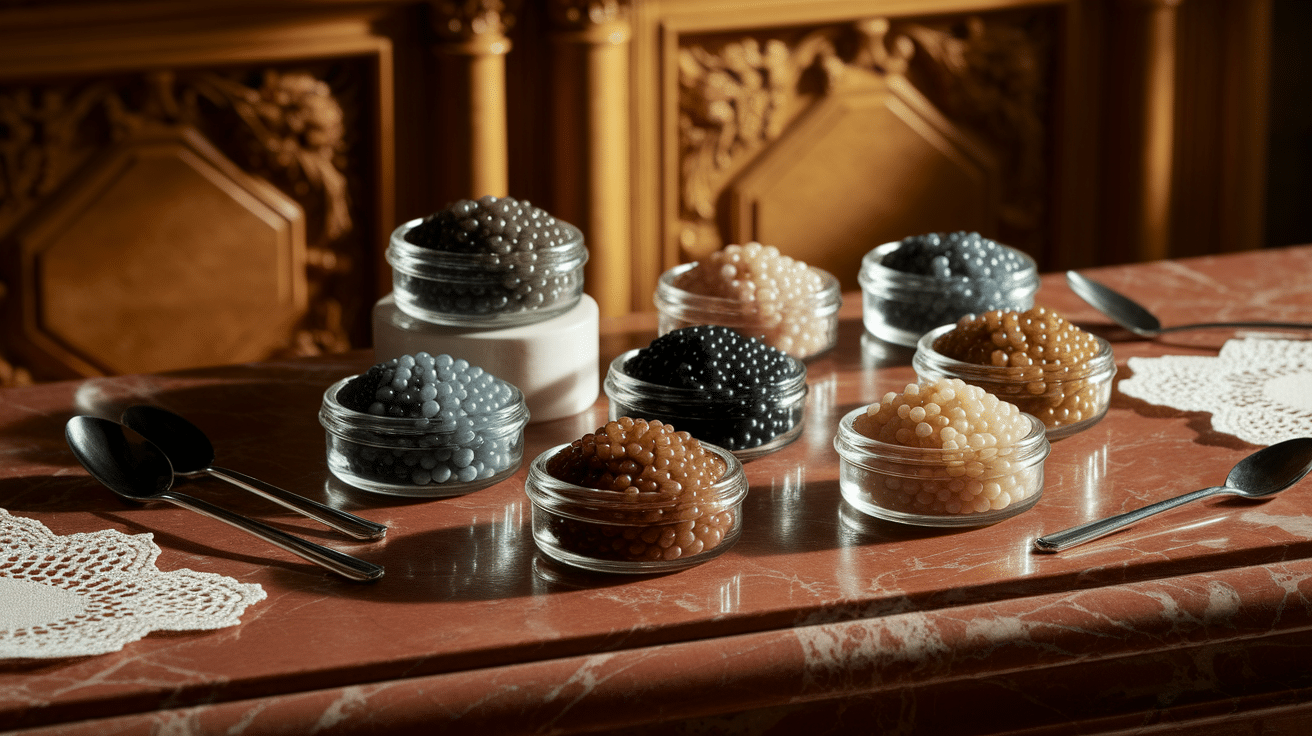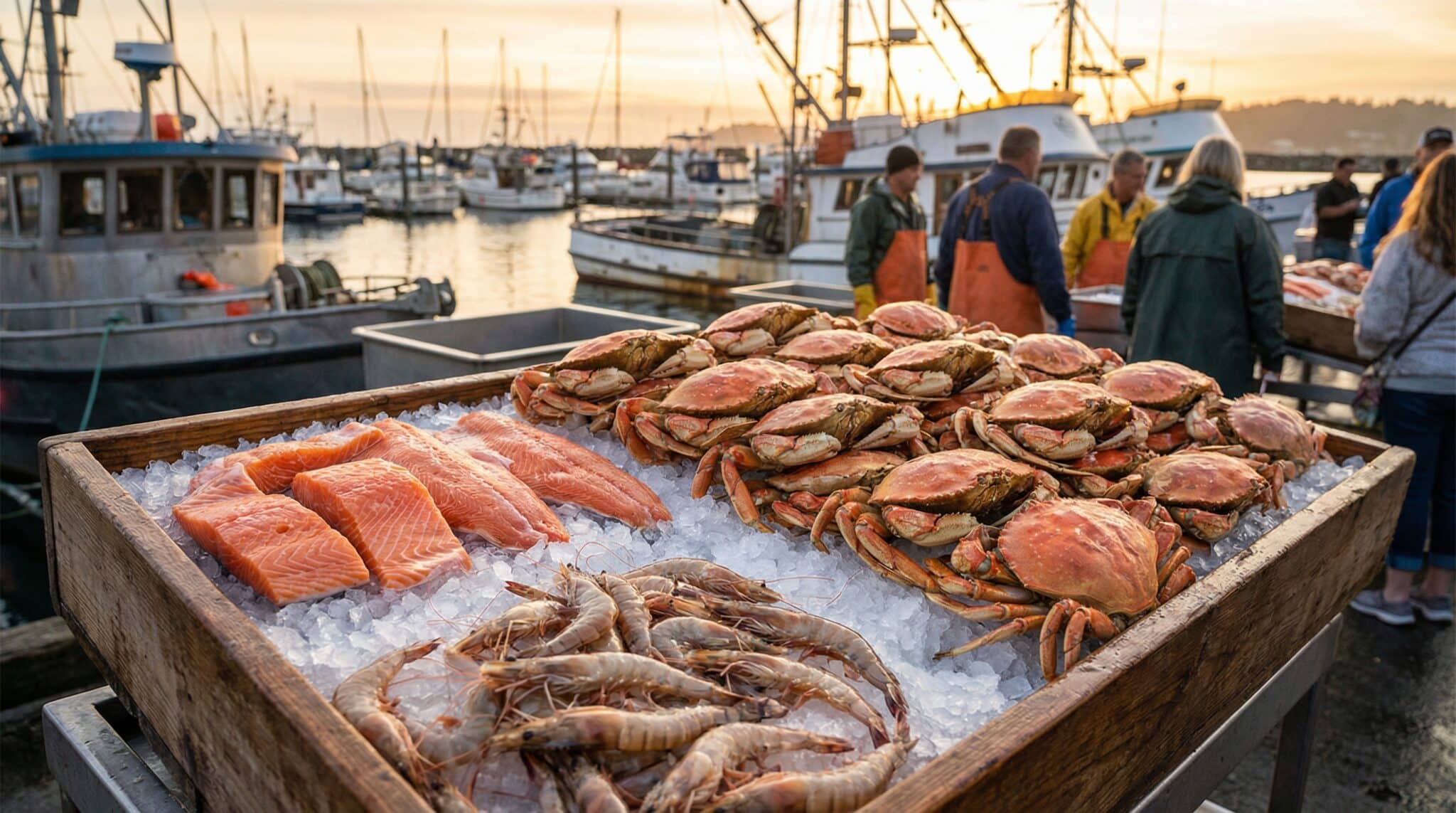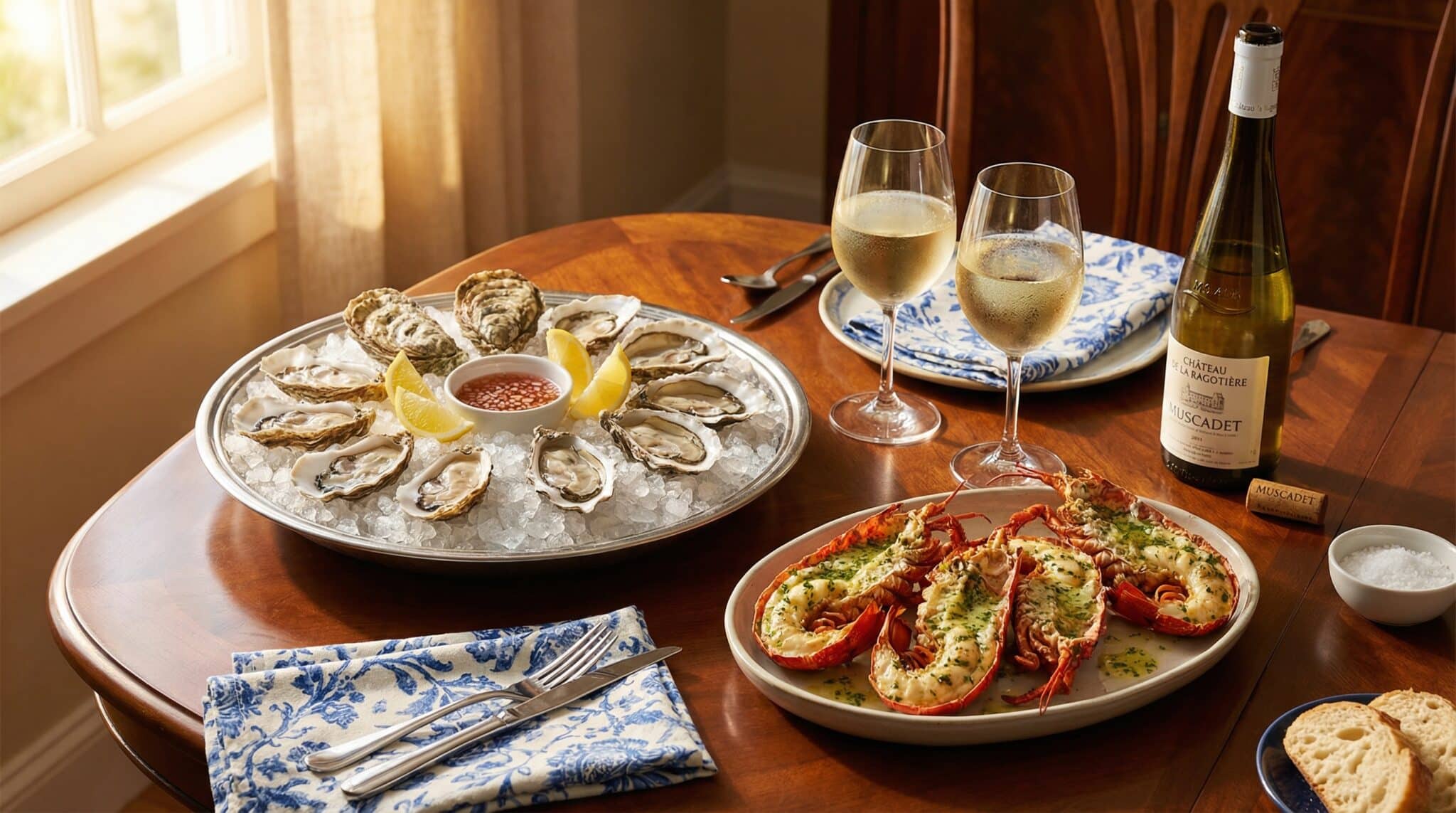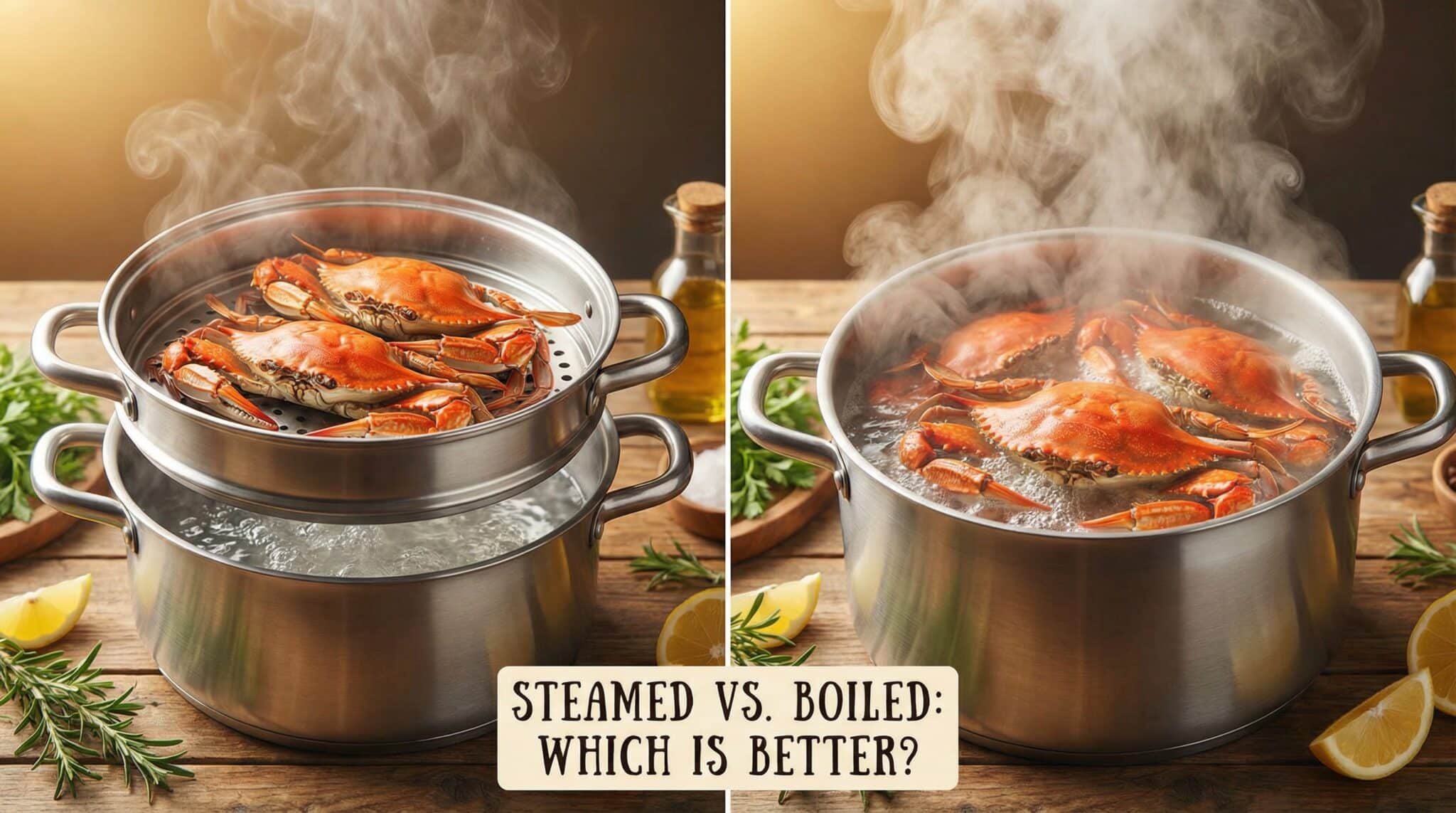Caviar is made from fish eggs, also called roe. But not just any fish eggs, true caviar comes only from sturgeon fish.
These eggs are gently harvested, cleaned, and then lightly salted to preserve their flavor and texture.
Depending on the type, it can also be creamy, nutty, or buttery. Because of its rich flavor, people usually enjoy caviar in small bites, served on toast, crackers, or straight from the spoon.
It has been enjoyed for centuries, especially in Russia, Iran, and Europe.
So, let’s go through different varieties of caviar that are farmed in many parts of the world and are more widely available than ever before.
10 Types of Caviar You Should Know About
Each kind has its own look, taste, and texture. Whether you are just starting out or looking for something luxurious, this list will help you understand your choices.
1. Beluga Caviar
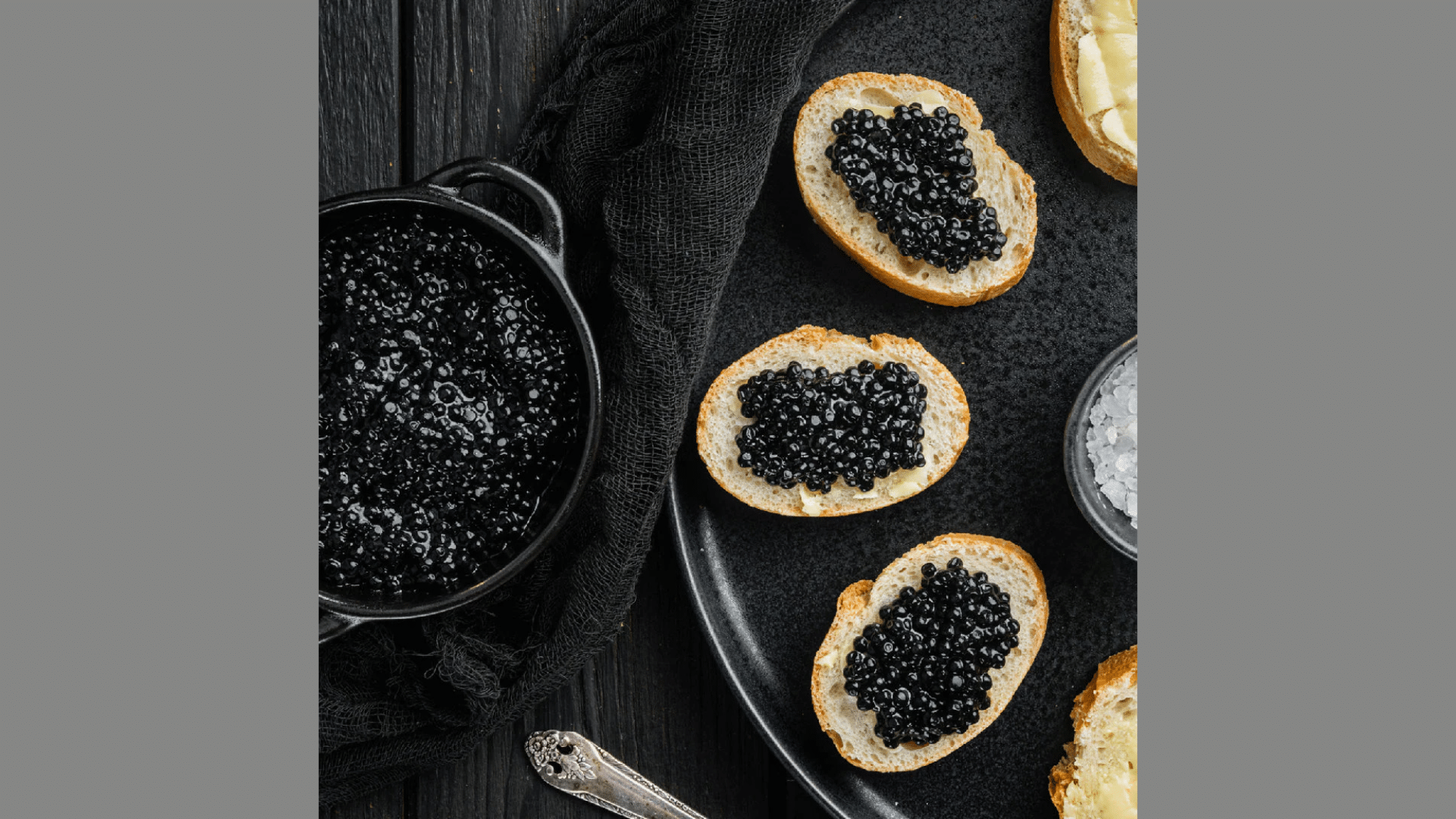
Beluga caviar is the most luxurious and rare type of caviar.
It comes from the Beluga sturgeon, which can live over 100 years and grow very large. The eggs are the biggest of all caviars and are known for their smooth, buttery flavor that gently melts in your mouth.
- Color: Light gray to jet black
- Texture: Soft, silky, and delicate
- Flavor: Mild, creamy, and rich
Beluga is usually served on its own to fully enjoy the taste.
Because of overfishing, it’s often restricted or banned in some countries, which is why many people now choose Beluga hybrids.
2. Osetra Caviar
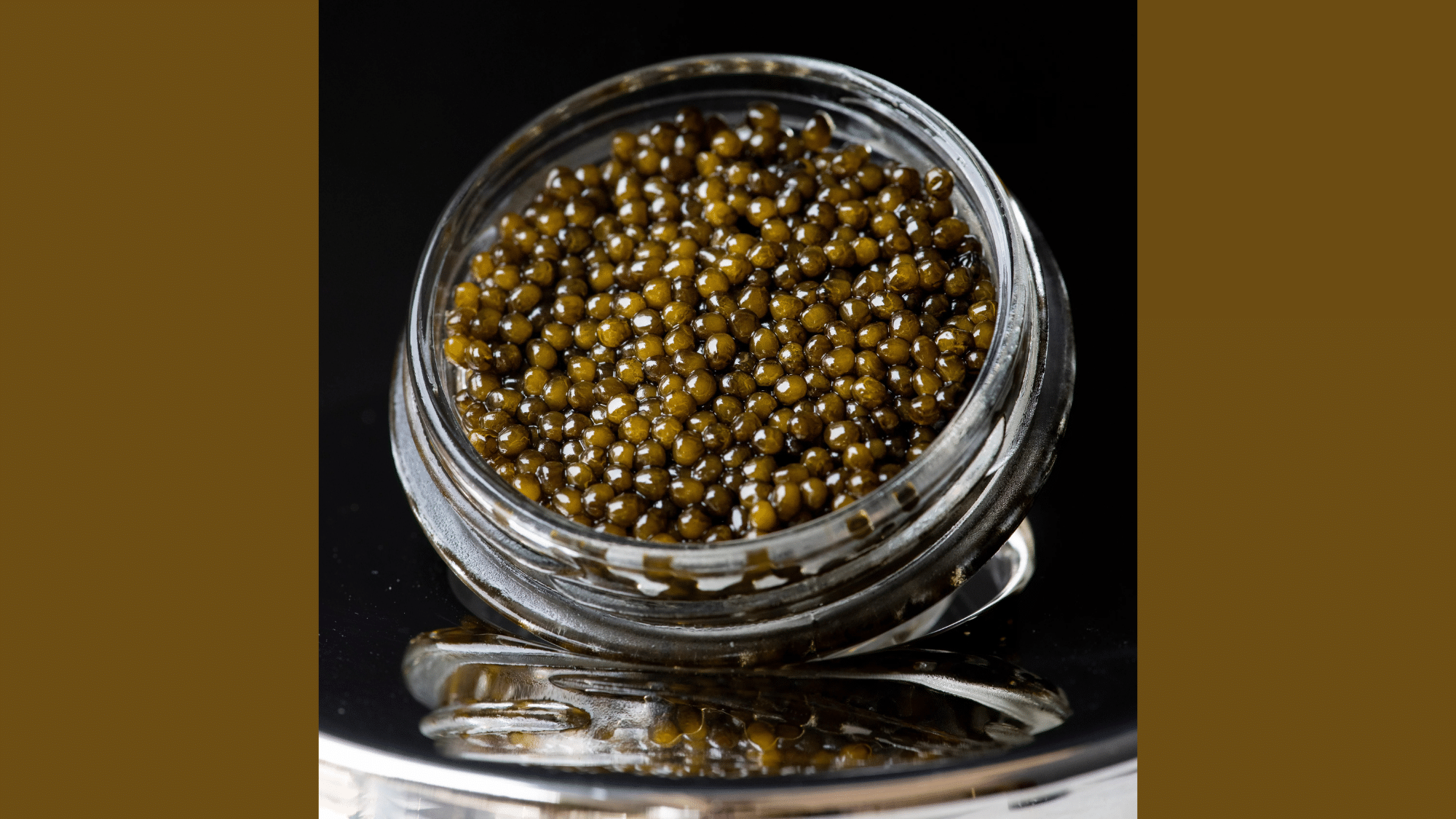
Osetra caviar is a popular favorite among chefs and food lovers.
It comes from the Osetra sturgeon and offers a medium-firm egg with a satisfying pop and rich, nutty flavor. Osetra caviar is prized for its variety in color and taste.
- Color: Golden brown, olive, or dark gray
- Texture: Firm with a pleasant pop
- Flavor: Nutty, briny, and smooth
Osetra pairs well with creamy dishes or mild bases like blinis and toast. Golden Osetra is especially rare and known for its lighter, buttery flavor.
3. Sevruga Caviar

Sevruga caviar has smaller eggs with a bold, salty flavor.
It comes from the Sevruga sturgeon, which grows faster than others, making this caviar more affordable. Its stronger taste makes it a favorite for people who enjoy a briny bite.
- Color: Light to dark gray
- Texture: Soft and fine
- Flavor: Oceanic, salty, slightly earthy
Sevruga is great for adding to scrambled eggs or pasta because it doesn’t get lost in the dish. It’s less expensive than Beluga or Osetra.
4. Kaluga Caviar
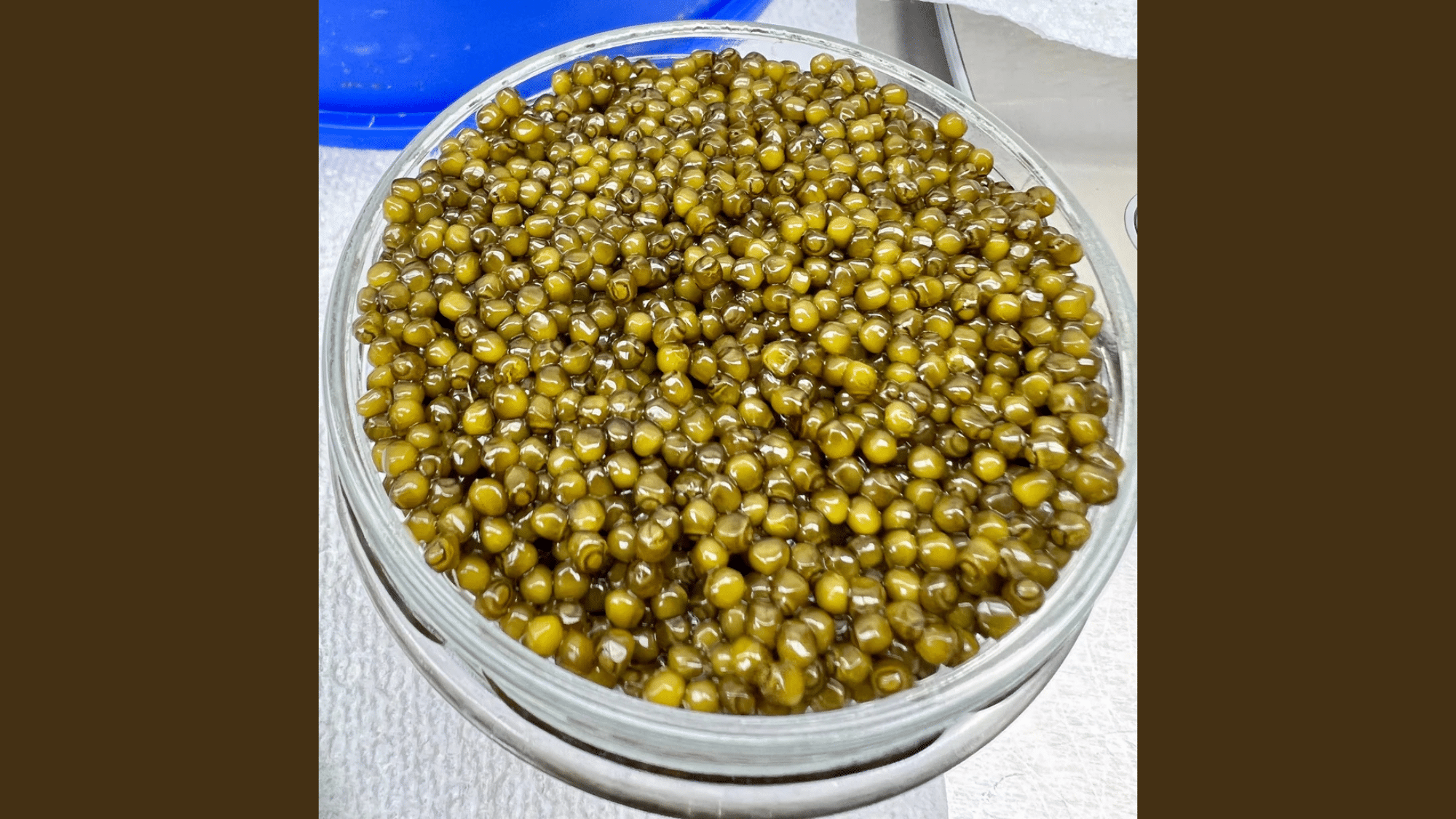
Kaluga caviar is often seen as the best alternative to Beluga.
It comes from Kaluga sturgeon or a Kaluga-Amur hybrid and offers big, beautiful eggs with a rich and smooth flavor. It’s often farmed in China and Russia.
- Color: Dark gray to golden brown
- Texture: Firm but silky
- Flavor: Buttery, clean, and mild
Kaluga Hybrid caviar combines Kaluga with Amur sturgeon for sustainability. It’s widely sold and tastes very close to Beluga.
5. Sterlet Caviar
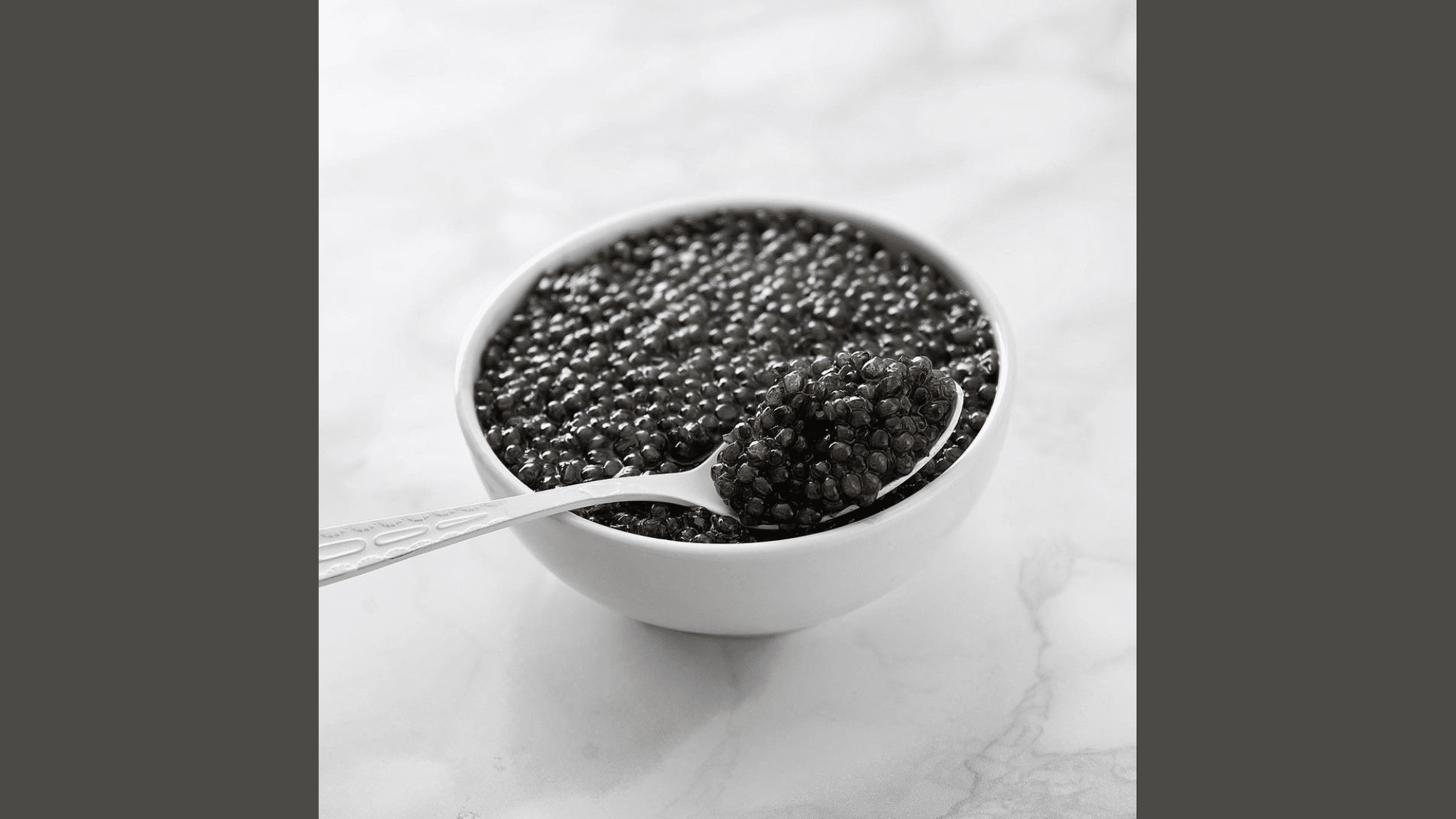
Sterlet caviar is rare and traditional. It comes from the Sterlet sturgeon, a smaller fish once reserved for royalty in Russia and Europe.
The eggs are small and subtle in taste, which makes this caviar unique.
- Color: Black to steel gray
- Texture: Smooth and soft
- Flavor: Mild, creamy, and light
Sterlet is perfect for first-timers or those who prefer a gentle flavor. It’s best enjoyed with toast or soft cheese. Sterlet roe from European rivers is known for its clean, fresh flavor.
6. White Sturgeon Caviar
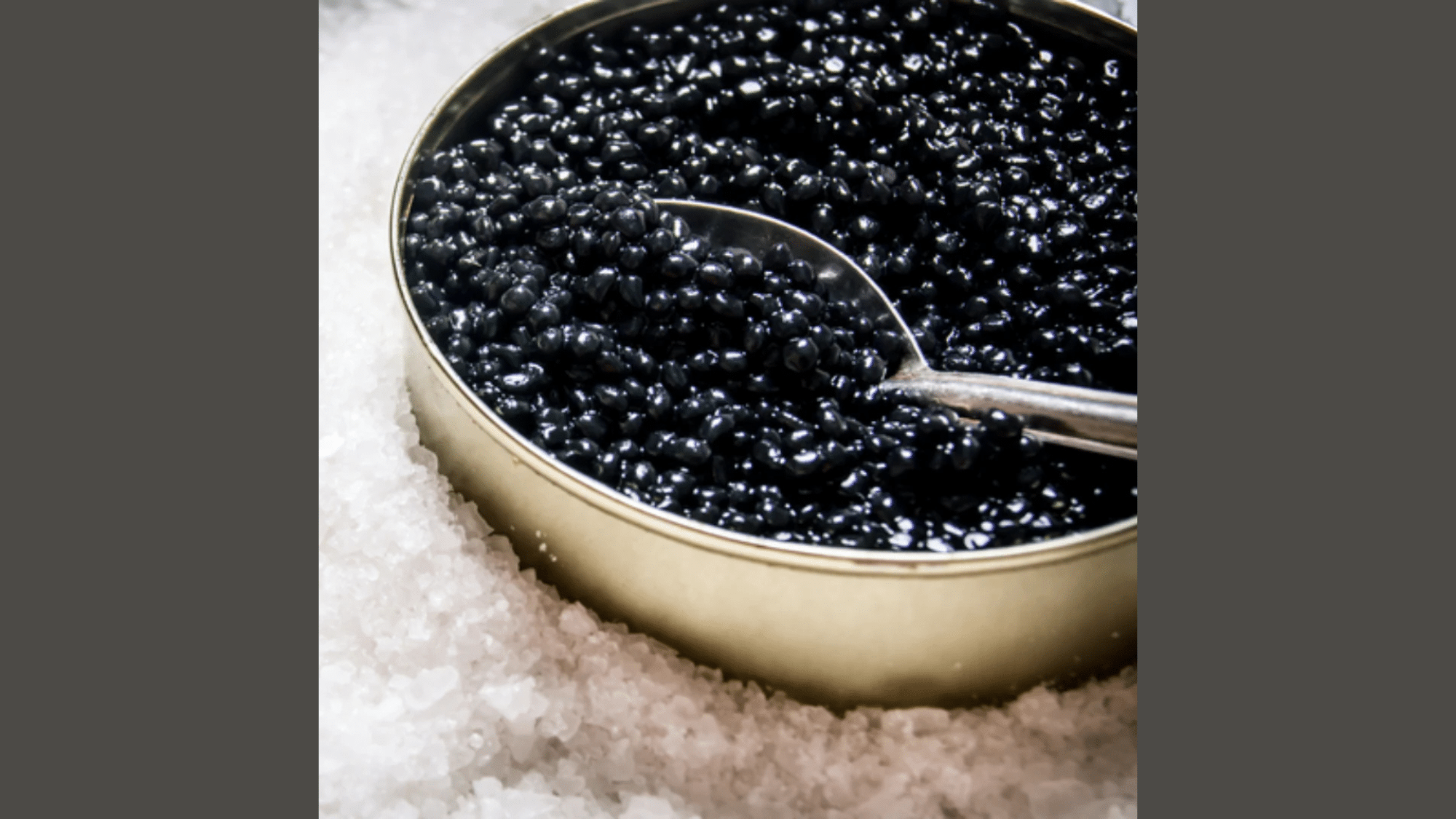
White Sturgeon caviar is one of the most farmed types in the U.S., especially in California.
It has a mild, nutty flavor and medium-sized eggs. It’s a great introduction to traditional caviar without overwhelming the palate.
- Color: Dark gray to black
- Texture: Smooth and slightly firm
- Flavor: Mild, earthy, slightly creamy
White Sturgeon caviar works well on crackers, pasta, or with soft butter. It’s also known for being environmentally sustainable.
7. Salmon Roe (Ikura)
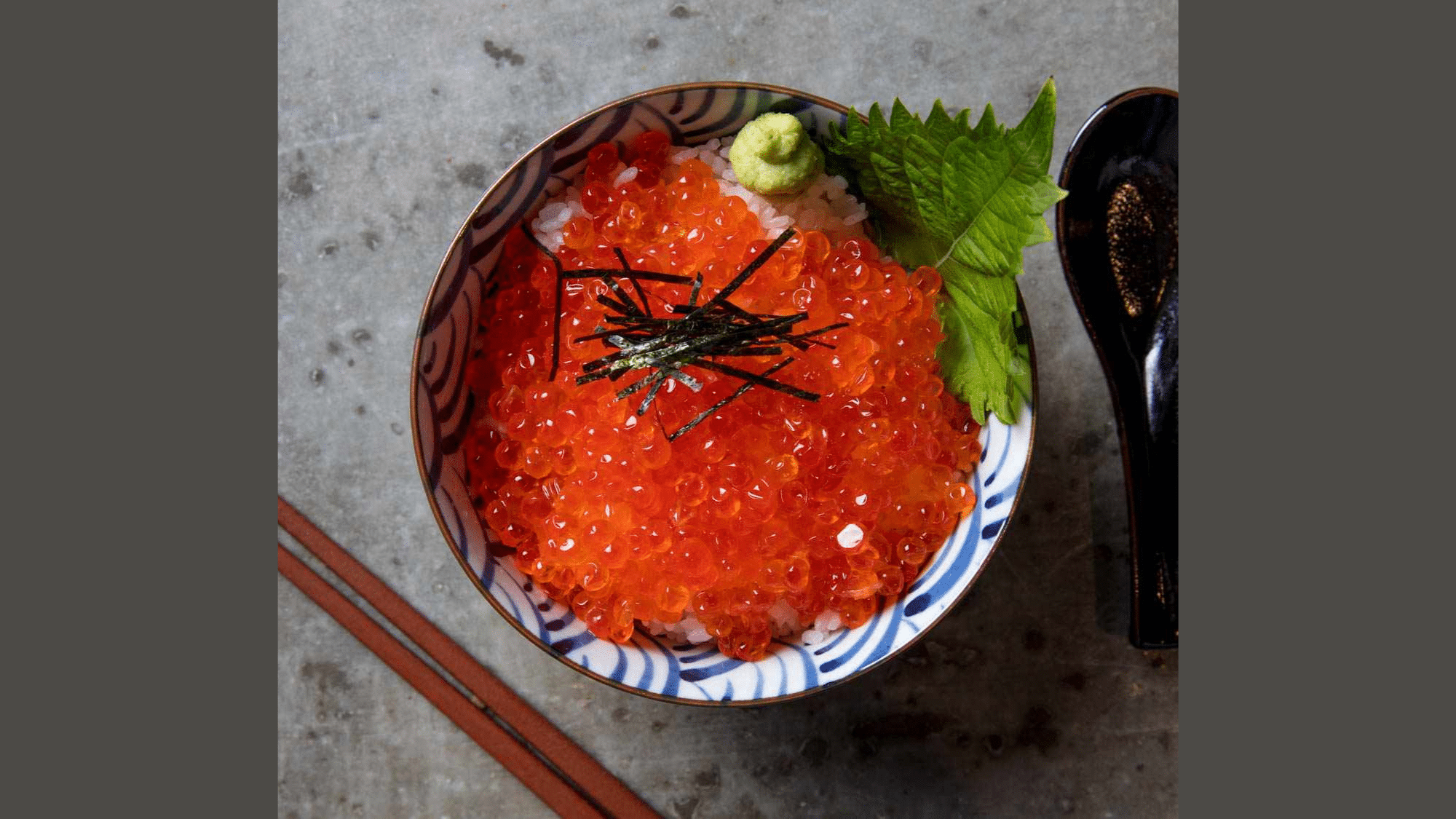
Salmon roe, also called Ikura in Japan, is not true caviar but is loved worldwide. The eggs are large and burst with a juicy, salty flavor.
It’s commonly used in sushi, but also great on toast or eggs.
- Color: Bright orange to red
- Texture: Big and juicy
- Flavor: Briny, strong, and fresh
Ikura is also packed with omega-3 fats and is good for your heart and brain. It’s popular for both taste and health.
8. Trout Roe
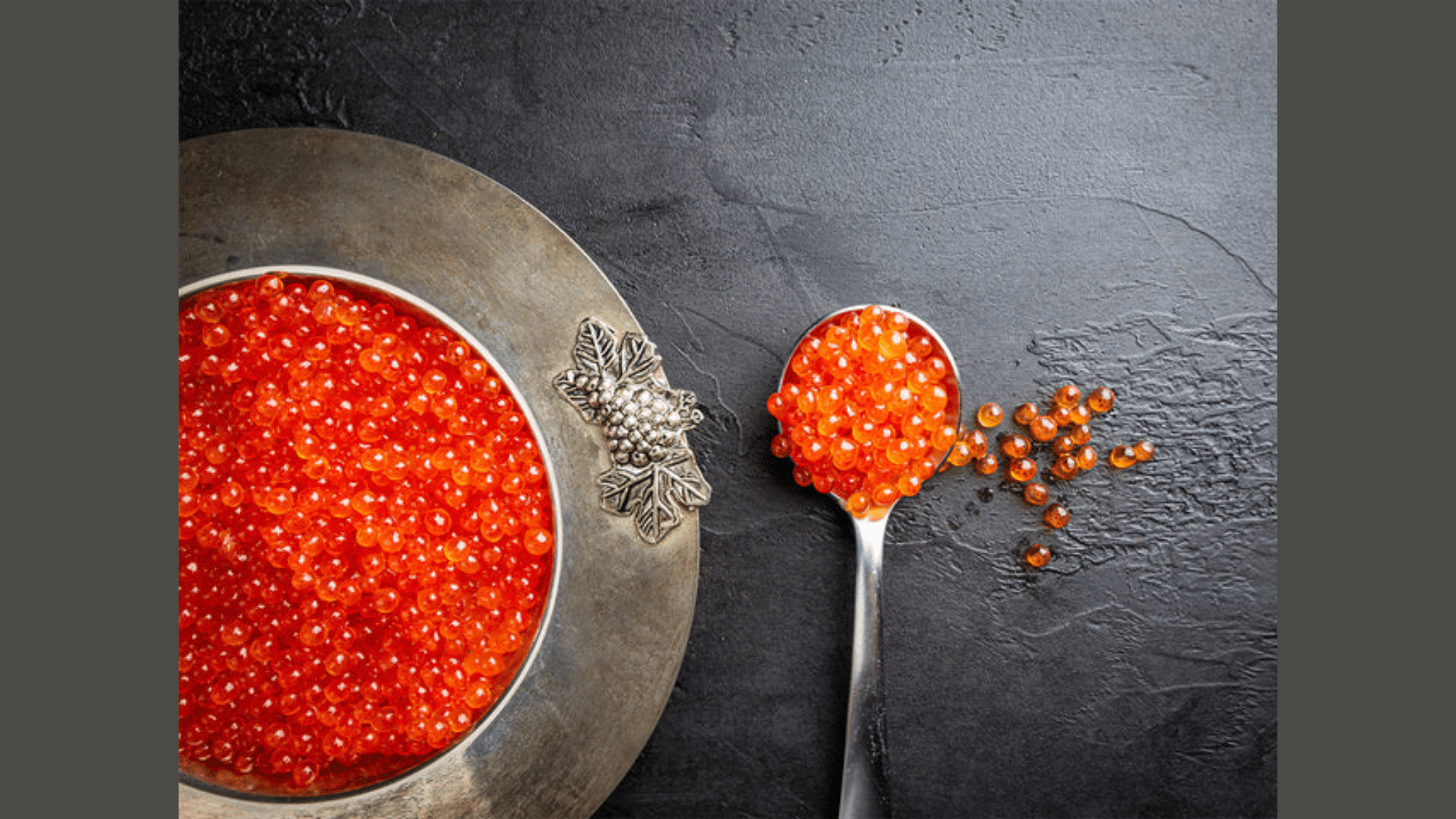
Trout roe is often chosen for its mild flavor and pretty orange color. It’s smaller than salmon roe but still gives a satisfying pop.
It’s often used in appetizers, egg dishes, and salad toppings.
- Color: Orange or golden
- Texture: Soft pop
- Flavor: Light, gently salty, clean
Trout roe is ideal for those who want something tasty but not too strong. It’s a fun way to add texture and color to food.
9. Paddlefish Roe
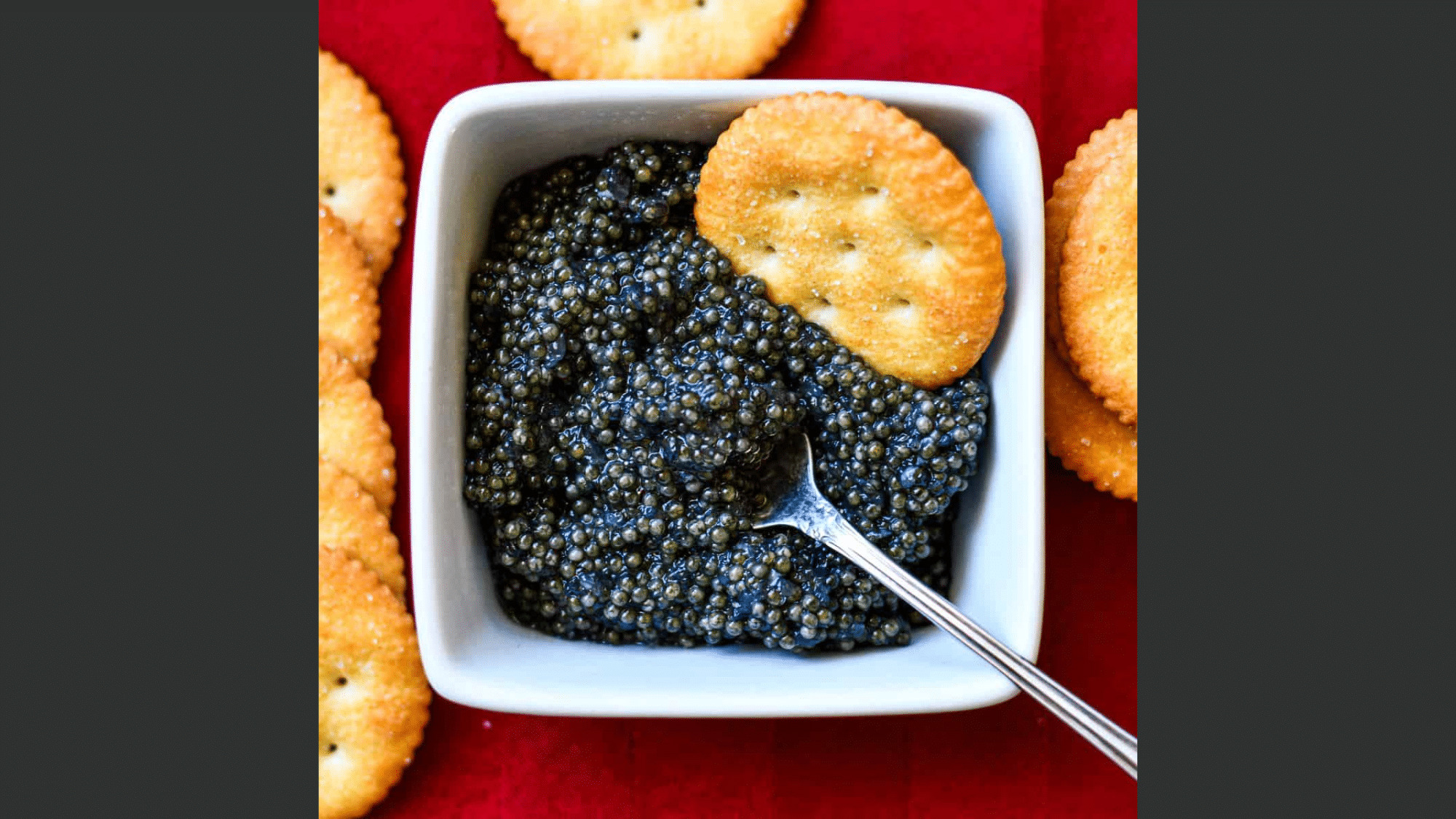
Paddlefish roe is often called the “American Sevruga” because it has a similar taste and look.
It comes from paddlefish found in U.S. rivers and lakes and is a great, budget-friendly alternative to sturgeon caviar.
- Color: Light gray to slate
- Texture: Soft and creamy
- Flavor: Earthy, bold, slightly fishy
Paddlefish roe is perfect for everyday use and often appears on party trays or in recipes. It’s a favorite among chefs for its affordability and taste.
10. Lumpfish and Bowfin Roe
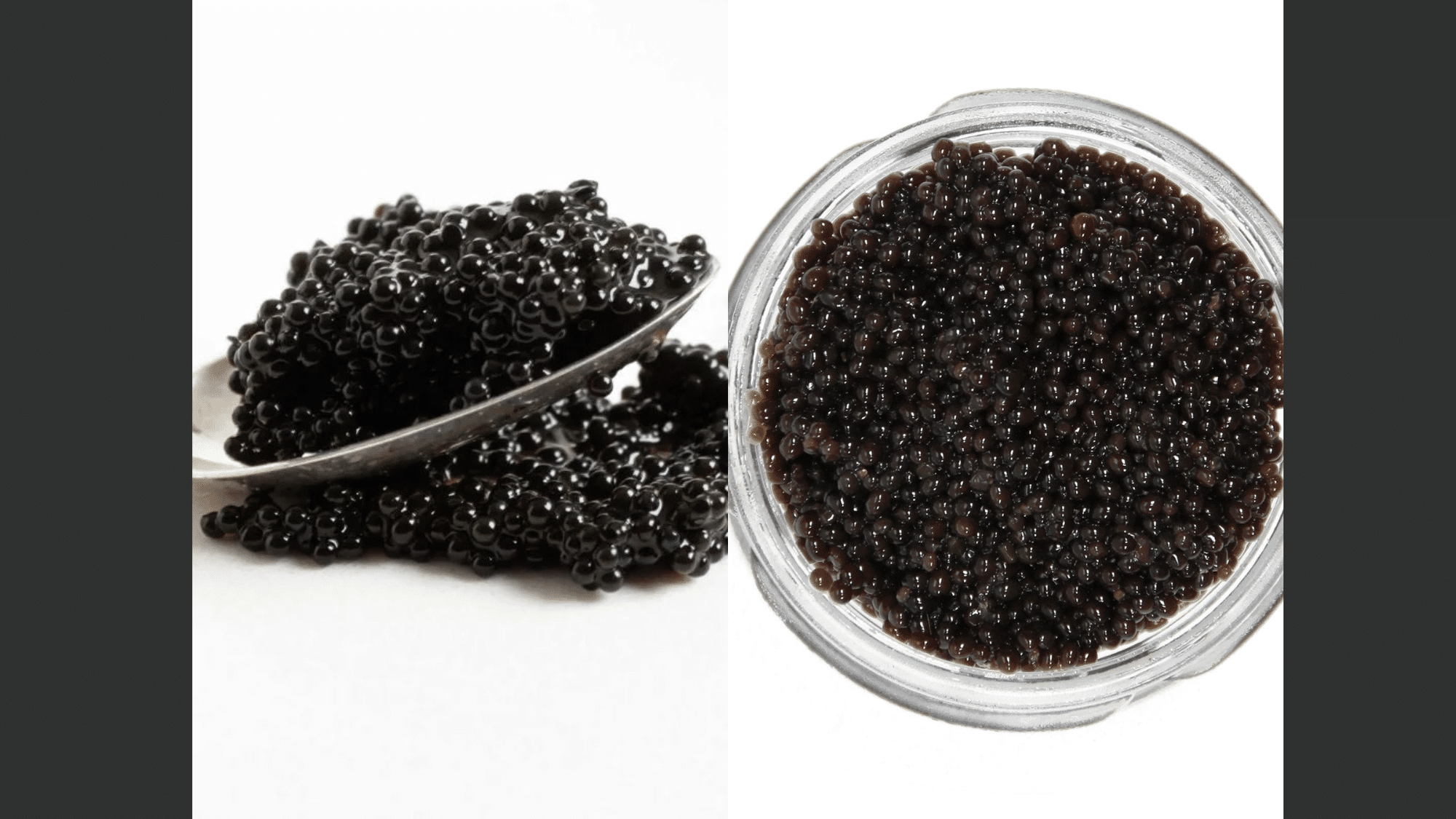
Lumpfish and Bowfin roe are widely available and affordable. Though not from sturgeon, they are often used to give a caviar-like experience.
They have small eggs and a salty kick that works great in appetizers or dips.
- Lumpfish Color: Often dyed black or red
- Bowfin Color: Natural black
- Texture: Crunchy
- Flavor: Salty, sharp, fishy
These types are perfect for anyone wanting to try caviar on a budget or for decorative food.
Bowfin roe is sometimes labeled as “Cajun caviar” due to its strong taste. Lumpfish roe is dyed and sold in jars in most supermarkets.
Sturgeon vs. Non-Sturgeon: What’s the Difference?
| FEATURE | STURGEON CAVIAR | NON-STURGEON CAVIAR |
|---|---|---|
| Legality | “Caviar” label reserved for sturgeon | Often labeled as “roe” |
| Prestige | Higher, traditional luxury | More accessible, less prestige |
| Flavor/Texture | Complex, delicate, varied | Simpler, more robust, or salty |
| Price | Expensive | Affordable |
Various Health Benefits of Caviar
Caviar isn’t just a luxury treat; it’s surprisingly packed with nutrients that can benefit your health when enjoyed in moderation:
- Rich in Omega-3 Fatty Acids: Supports heart, brain, and joint health.
- High Vitamin B12 Content: Boosts energy levels and promotes healthy blood.
- Contains Vitamins A and D: Strengthens immunity, skin health, and vision.
- Excellent Protein Source: Helps with muscle repair and strength building.
- Very Low in Carbohydrates: Perfect for keto and low-carb diets.
- High in Essential Minerals: Provides selenium, iron, and magnesium.
Grades of Caviar: Classic, Gold, and Special Reserve
| GRADE | CHARACTERISTICS | BEST FOR |
|---|---|---|
| Classic | Most common grade with slightly smaller eggs and less visual appeal, but still delivers good taste and texture. | Everyday enjoyment, first-time buyers |
| Gold | Rare and elegant golden eggs with mild flavor and beautiful appearance | Special gifts, elegant events |
| Special Reserve | Top-shelf quality with handpicked eggs for perfect size, color, and flavor | Fine dining, VIP occasions |
Each grade offers its own appeal, from accessible classic to ultra-premium Special Reserve.
Your choice depends on the occasion, your palate, and how much you want to splurge on this luxurious treat.
Caviar Pairing Secrets: What Goes Best
Caviar is best enjoyed with simple foods that don’t overpower its delicate flavor.
Classic pairings include blinis with crème fraîche, toasted bread, or boiled potatoes; these soft, neutral bases let the caviar truly shine.
For creative twists, try topping deviled eggs with caviar for elegant appetizers, mixing it into soft scrambled eggs for a luxurious breakfast, or adding it to avocado toast for a modern touch.
When it comes to drinks, chilled Champagne or dry vodka are traditional choices, while crisp white wines like Sauvignon Blanc also complement caviar beautifully.
Note: Always serve caviar with non-metallic utensils to avoid affecting its taste.
The Bottom Line
Always remember, caviar isn’t just for special occasions or gourmet menus; it’s a unique food experience worth trying at least once.
With so many varieties available today, there is something to suit every taste and budget.
Whether you prefer subtle or bold flavors, small bites or elegant pairings, exploring caviar can be both fun and approachable.
Start with what feels right for you, and enjoy discovering a tradition that’s as much about curiosity as it is about taste.
Frequently Asked Questions
What Does Malossol Mean on a Caviar Label?
Malossol is a Russian word meaning lightly salted. Caviar labeled Malossol has minimal salt—usually under 5%—to let the natural flavor of the eggs shine through.
Is Caviar Safe to Eat During Pregnancy?
Pregnant women should consult a doctor before eating caviar. While pasteurized caviar is safer, raw or unpasteurized caviar may carry a risk of listeria, a harmful bacterium.
Can People with Seafood Allergies Eat Caviar?
No, people with fish or seafood allergies should avoid caviar. Since it’s made from fish eggs, it can trigger allergic reactions just like fish meat.
Are There Vegan or Plant-Based Caviar Alternatives?
Yes, some brands offer “vegan caviar” made from seaweed or algae. These products mimic the look and texture of real caviar but contain no animal ingredients.



